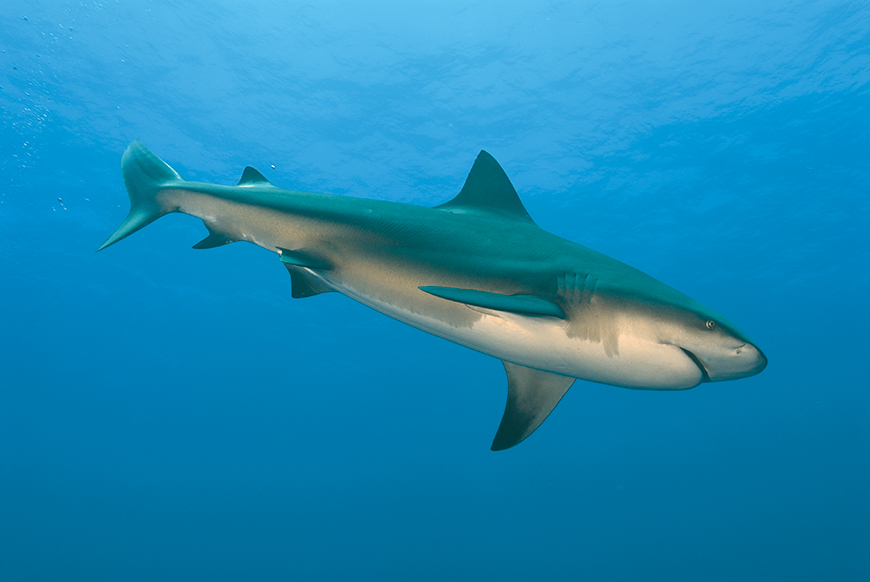Bull shark is a large shark that, unlike most sharks, often lives in fresh water. The shark has a stout body with a blunt snout. It is gray or brown above and pale on the belly. The fins of young bull sharks may have black tips.
Most adult bull sharks are 5 to 7 feet (1.5 to 2.1 meters) long and may weigh more than 500 pounds (230 kilograms). Females are larger than males. The largest females reach 13 feet (4 meters) in length. 
The bull shark is found in tropical and temperate (mild) coastal waters around the world. It is one of the few sharks that can live readily in fresh water as well as salt water. Young bull sharks, in particular, may live in rivers and lakes. Living there enables young sharks to avoid larger sharks that might eat them. They also face less competition for food. The young typically move out to the ocean after they reach about 2 to 3 years old. Adults usually live in shallow coastal waters. But adults have been found in lakes in Nicaragua and South Africa. They may travel far up the Amazon River in South America or the Mississippi River in North America.
The bull shark eats a variety of bony fish. It also eats small sharks and rays. It occasionally eats crabs, dolphins, shrimp, squid, and sea turtles.
Females give birth to live young after a pregnancy of 10 to 11 months. There may be as many as 13 pups in a litter. The bull shark can live for 25 years or more.
The bull shark is a popular game fish. Commercial fishing boats also catch bull sharks, usually by accident. Overfishing and habitat loss have reduced the shark’s numbers. Because many bull sharks live inland, they are easily threatened by such human activities as commercial development. The bull shark can be dangerous to people. Bites are rare, but have occasionally been fatal.
